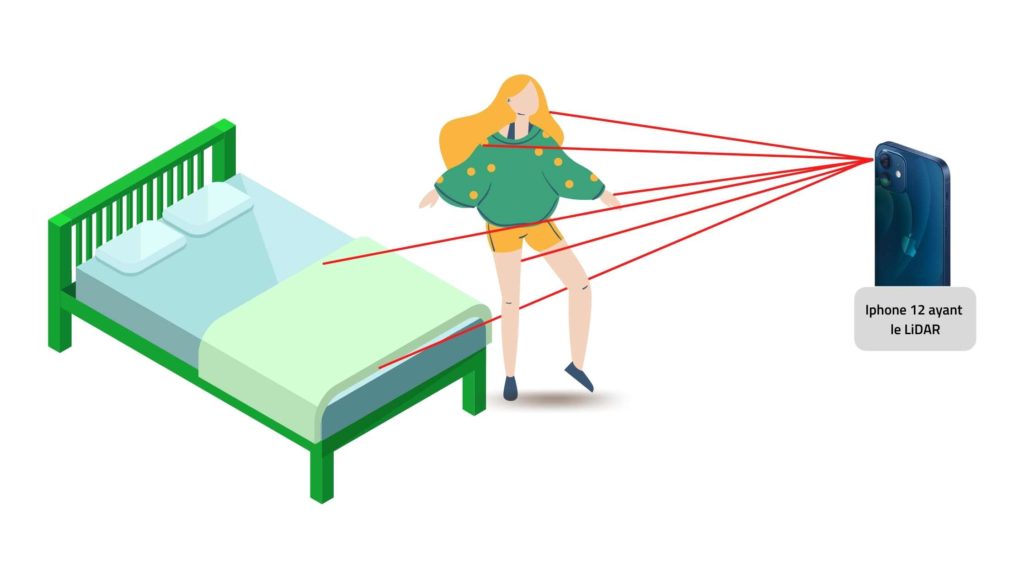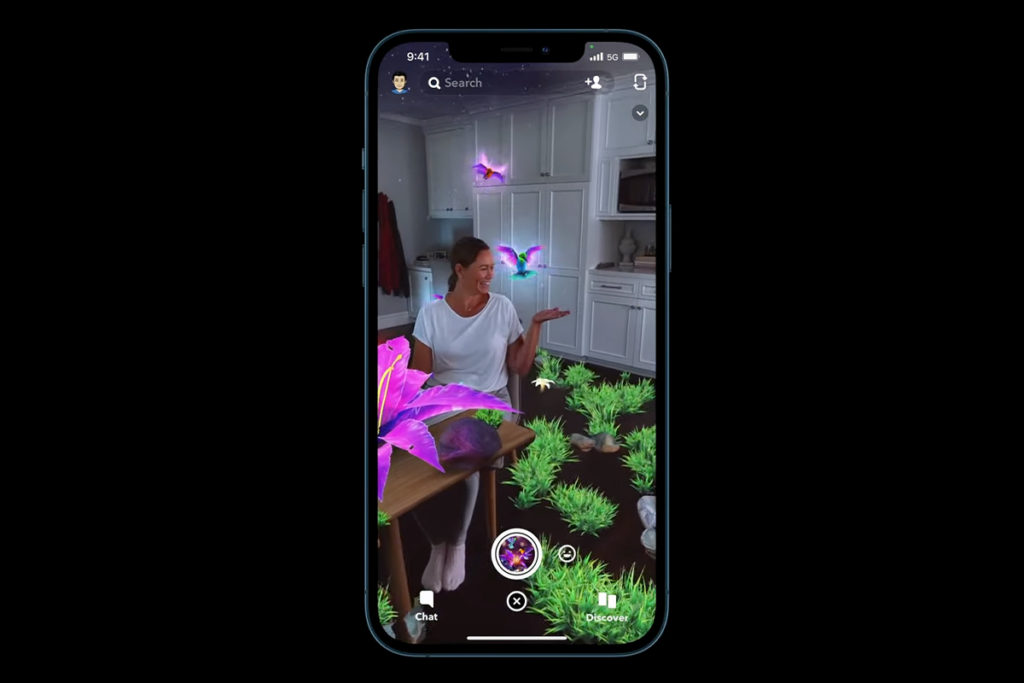LiDAR: a revolution for augmented reality filters
You've probably heard of it, TikTok has released an augmented reality filter to mark the new year 2021. But only a small number of TikTok users were able to use the filter, as they had to be in possession of the new iPhone 12. This is currently the only smartphone on the market with LiDAR (Light Detection And Ranging).
What is LiDAR?

LiDAR is a photo sensor with the ability to calculate the distance between the camera and a subject using laser beam technology. This allows the camera to get information about the terrain in front of it.
Contact
A new era for augmented reality on smartphones
However, LiDAR is not so new as it was already used for the Apollo 15 mission in 1971. But the integration of this technology into smartphones is new and promises a big change in the projection of augmented reality on our phones.
Today, augmented reality on smartphones is not able to detect distance. The projection is therefore made on the screen without taking into account the person or furniture in the vicinity. However, with LiDAR technology, smartphones will be able to adapt to the environment. Take the example of the Tik Tok filter released earlier this year. It shows confetti landing on the sofa behind the person and following the movement of their arms. This phenomenon has become possible thanks to Lidar. Indeed, on a smartphone (other than the Iphone 12), the confetti would have acted differently: they would have just fallen horizontally without taking into account the movements of the user and his surroundings.

This new feature is likely to become widespread in new smartphones coming out in the next few years and will therefore leave a much more realistic and immersive effect when using augmented reality. Users will be able to enjoy a better experience and exceptional quality when using filters on social networks or even on websites that offer augmented reality.
Currently, no other smartphone brand has announced a smartphone with LiDAR. But social networks know that this feature is a treasure trove for augmented reality filters and will therefore be able to spread the word to smartphone manufacturers. With the pressure from social networks and the massive release of videos showing filters captured with LiDAR, we can expect smartphones to be equipped with this technology soon.